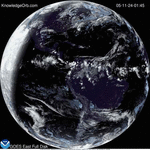More exoplanets than expected in the first year of the Habitable Exoplanets Catalog.
The first confirmed extrasolar planets, or exoplanets, were discovered from the Arecibo Observatory twenty years ago, in 1992. These were extreme planets around PSR-B1257+12, a collapsed form of star known as a Pulsar. In 1995 the planet 51 Pegasi b was discovered around a more typical Sun-like star. Today scientists know of nearly 900 confirmed exoplanets with over 2,500 still awaiting confirmation. Only a few of those might be good candidates for life, as we know it.
Michio Kaku said in his 2006 article Star Makers that “Scientists may eventually compile an encyclopedia identifying the precise coordinates of perhaps hundreds of Earth-like planets.” Five years later, on December 2011, it all started to happen with the creation of the Habitable Exoplanets Catalog (HEC). Although there are many databases dedicated to extrasolar planets, HEC is the only one focused on Earth-like worlds.
HEC is as a project of the Planetary Habitability Laboratory (PHL) of the University of Puerto Rico at Arecibo. It was conceived out of the need to measure the suitability for life of these emerging worlds and as a way to organize them for the general public. Every time an Earth-size planet is described as a habitable world is confusing. There are nearly 80 confirmed exoplanets, and 250 Kepler candidates, with a similar size to Earth but only a few of those have the right distance from their star to support liquid water on the surface.
Several methods are used by HEC to classify and rank the habitability of exoplanets. One of the most popular ones is the Earth Similarity Index (ESI), a measure of Earth-likeness in a scale from zero to one, one being identical to Earth. The exoplanet classifications use the word terran instead of ‘Earth-size’ to avoid a strict comparison with Earth. Many of these worlds might have some physical similarities with Earth but might not necessary be Earth-like.
Seven potentially habitable exoplanets are now listed by HEC, including the disputed Gliese 581g, plus some 27 more from NASA Kepler candidates waiting for confirmation. These are objects of interest for further astronomical observations but there is no guarantee on the habitability or even the existence of many of these planets. It will take many new observations, and more ground and space observatories to verify and characterize these objects.
HEC was launched, December 5th, 2011, the same day that the NASA Kepler team announced the discovery of Kepler 22b during the First Kepler Science Conference in NASA Ames, California. It started with just two planets, Gliese 581d and HD 85512b. Later, Kepler 22b, Gliese 667Cc, Gliese 581g, Gliese 163c, and HD 40307g were added, in chronological order. All these exoplanets are superterrans, aka Super-Earths, and quite larger than Earth but still considered potentially habitable. Scientists have not yet found a true Earth analog.
HEC is now a very complex computer program, written in IDL, that incorporates data from many exoplanet databases, such as the Extrasolar Planet Encyclopedia and NASA Exoplanet Archive, plus many updates from other research groups. It receives most of the data of new relevant discoveries directly from the research teams, which is analyzed and added to the catalog at the moment of their public announcement.
Potentially habitable exoplanets are hard to detect, from two to seven in a year was a big and unexpected change. What will happen in 2013? HEC will be expanded with new models and analysis in the next year. This will impact somehow the objects listed in the catalog. Expect new visualizations and new habitability assessments. However, the biggest impact will come from new discoveries. A true Earth analog or a potentially habitable exomoon would be big discoveries. Certainly, this was the right time to start mapping the habitable universe around us.
Credit: The Planetary Habitability Laboratory @ UPR Arecibo (phl.upra.edu)









I like this Post. I like reading these stories.
I want more information on this and sun.
Seven potentially habitable exoplanets are now listed by the Habitable Exoplanets Catalog, including the disputed Gliese 581g, plus some 27 more from NASA Kepler candidates waiting for confirmation.